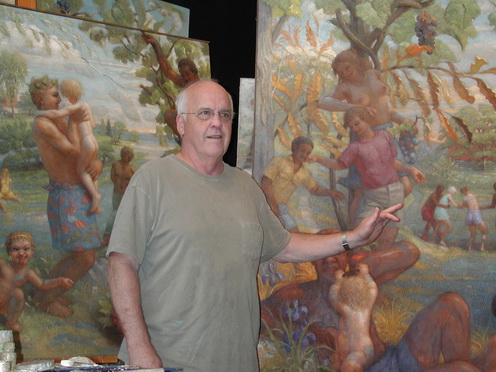 |
Thomas Cornell | |
| Birth Date: March 1, 1937 |
||
| Death Date: December 7, 2012 Artist Gallery |
||
| Thomas Cornell was born March 1, 1937 in Cleveland, Ohio. Cornell studied art at Amherst College and at Yale University School of Art and Architecture . In 1960, Cornell became a professor of art at the University of California, Santa Barbara. In 1962, he became a professor of visual art at Bowdoin College, where he taught until his death.
In his early career, Cornell was known mainly for drawings and prints. Cornell's prints were included in exhibitions at the Museum of Modern Art, Philadelphia Print Club, DeCordova Museum, University of San Diego, Brooklyn Museum, and the National Council of Fine Arts. During this time, Cornell also founded his own publishing house, called Tragos Press, and printed editions of books and broadsides (double sided prints).
Later Cornell turned primarily to oil painting. This included both large narrative compositions and landscapes. In 1969 and during the Viet Nam era Cornell's anti-war triptych "Dance of Death" was featured in the travelling museum exhibition of young New England painters. Museum curator Karl Nickel says, in reference to Cornell's Dance of Death, It is a splendid and civilized thing to see an artist aroused, to sense both the Olympian authority of his accusation and the humanity of his understanding.
Later on in life, Tom Cornell became involved in Occupy Brunswick, a grassroots movement fighting for local change and justice. He was working on an activist piece for the movement at the time of his death.
Cornell's art revolves around themes of social justice and mankind's relationship with nature. Critic Martica Sawin states: Unlike many artists who are involved with the art-making act to such an extent that medium and process become dominant over intentionality,Cornell puts the idea before the act. Art for him has from the start been a means of giving form to a specific socially significant theme. Michael Kammen refers to Cornell's more recent work as having adopted a pastoral style that highlighted lyrical celebrations of life and nature. He sought to create images of people so beautiful that they would inspire people to change their lives.
|
||


